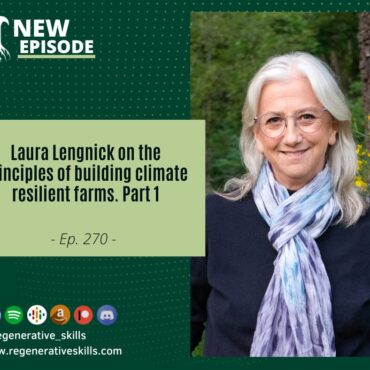
Laura Lengnick on the principles of building climate resilient farms. Part 1
It’s been a wild couple of weeks for me and as a result I’m struggling a bit to catch up. After the 5 day regenerative Design course at the Green […]
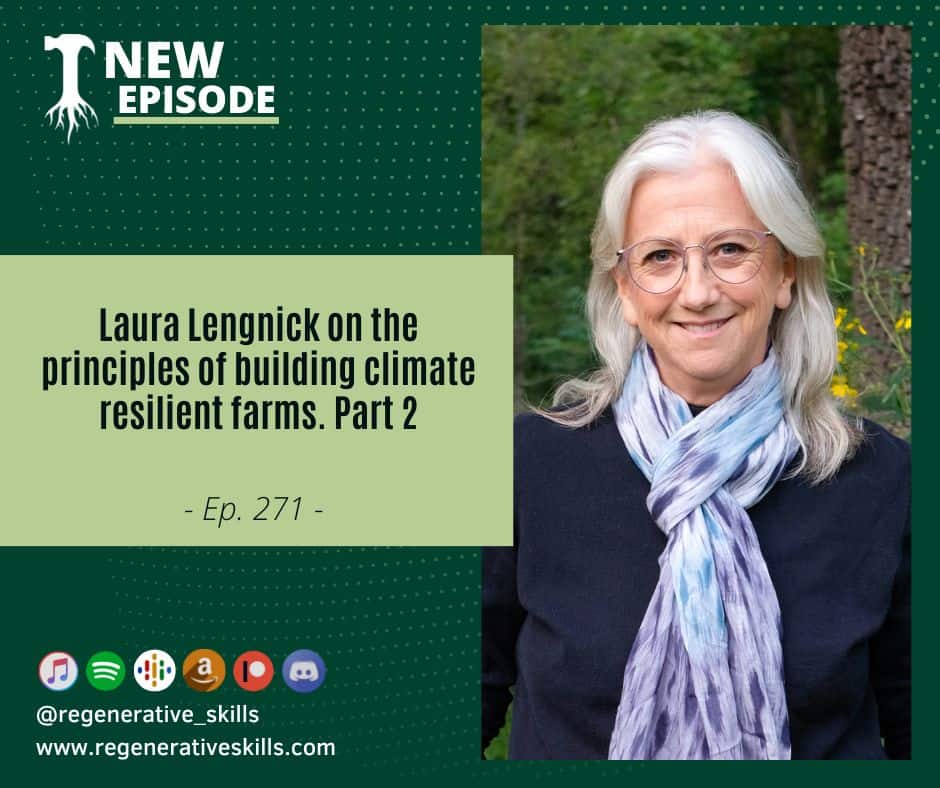

This week I’ll be presenting the second in a two part series exploring the topic of building true resilience in agriculture. Resilience is often thought of as the ability to bounce back from a disturbance or a challenge, but in these two episodes we’re going to dig deeper and not only broaden the theory of true resilience, but also to look into case studies of growers and land stewards who are building lasting resilience on their farms. To help me to understand all of this better and to give practical advice that all of us, even those of us that don’t work directly with the land can use in our lives, I had a wonderful conversation with Laura Lengnick. If for any reason you haven’t listened to the first part of this interview, make sure to check it out. It’ll give a lot of context to what we discuss in this session.
Laura is an award-winning soil scientist with 30 years of experience working as a researcher, policymaker, educator, activist and farmer to put regenerative values into action in U.S. food and farming. Her research in soil health and regenerative farming systems was nationally recognized with a USDA Secretary’s Honor Award in 2002 and she was a lead author on the 2013 USDA report, Climate Change and Agriculture in the United States: Effects and Adaptation. Since 2015, Laura has led research and planning projects exploring agricultural climate solutions, developed carbon management plans for organizations, and designed and delivered climate risk management workshops for farmers. Laura is also the author of The 2nd edition of her award-winning book, Resilient Agriculture: Cultivating Food Systems for a Changing Climate in which she explores climate change, resilience and the future of food through the adaptation stories of 45 sustainable, organic, climate-smart and regenerative farmers and ranchers across the U.S. In 2021, Laura joined the Glynwood Center for Regional Food and Farming as the Director of Agriculture. You can learn more about Laura and her work at www.cultivatingresilience.com
In the second part of this series, we’ll explore some of the many case studies in Laura’s book from farms that she’s visited and worked with across the United States. We’ll also fish out the commonalities among these stories to try and understand the mindset of resilience and the characteristics that are useful in pursuing it. Laura also breaks down the 12 things that everyone can do to build resilience in the agrifood industry regardless of whether or not you’re actively managing land.
As a bonus to these episodes, thanks to my partnership with New Society Publishers who published Laura’s book, as well as many other invaluable volumes centering on topics of regenerative living, listeners of this show who are also signed up on our Discord community can now win either a physical or digital copy of Resilient Agriculture over the next week. It’s super simple to be eligible to win. All you have to do is sign up for free to the Discord server either on the homepage on our website at regenerativeskills.com or through the link on our bio on instagram. Once you’re in, just send me a direct message letting me know that you’d like to win a copy of the book and I’ll enter you in the drawing which I’ll do a week after the second part of this interview.
Links:
Tagged as: resilient agriculture.

It’s been a wild couple of weeks for me and as a result I’m struggling a bit to catch up. After the 5 day regenerative Design course at the Green […]
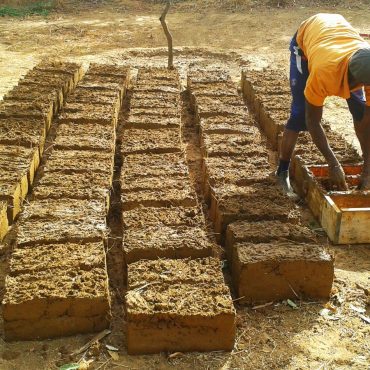
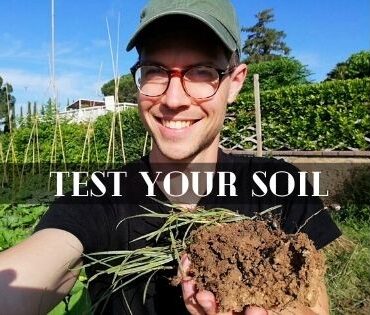
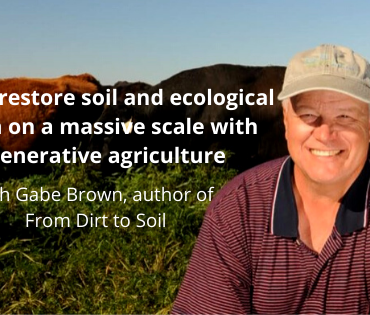
Copyright Regenerative Skills 2021
Post comments
This post currently has no comments.